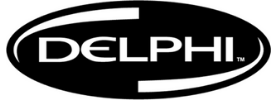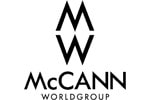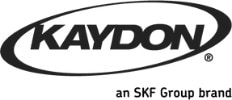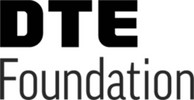
Sales Support: Building the Marketing Foundations
Sales Support: How Marketing, Branding, and Online Presence Accelerate Sales Performance
Why Sales Isn’t Everything
In the fast-paced world of business sales support tends to get missed while focusing strictly on generate short-term revenue. Sales often steals the spotlight, but focusing on sales alone is not enough to ensure long-term success. While closing deals is critical, relying solely on sales without building a strong foundation leaves your business vulnerable to slow growth and missed opportunities. The truth is sales are just the final step in a much larger process.
Without the support of marketing, brand building, business development, a solid online presence, and demonstrating Expertise, Experience, Authoritativeness, and Trust (E-E-A-T), sales teams are forced to work harder for every lead and face longer sales cycles.
Sales might get you through the door, but it’s the foundational elements that help you secure trust, build relationships, and accelerate the decision-making process.
We will explore how these critical components work together to create a powerful engine that drives sales effectiveness and helps close deals faster.
Marketing: Fueling the Sales Support Engine
Marketing is often misunderstood as being synonymous with sales, but the two serve different functions. While sales focus on converting prospects, marketing is responsible for driving awareness, capturing interest, and nurturing leads before they reach the sales funnel. Marketing lays the groundwork by:
-
Generating leads:
Effective campaigns bring in qualified leads that sales teams can close faster.
-
Nurturing relationships:
Marketing keeps potential customers engaged with relevant content and communications.
-
Creating demand:
Through advertising, SEO, and social media, marketing increases the visibility of your products and services.
Without marketing’s support, sales teams would need to create their own leads from scratch, wasting valuable time and energy. In short, marketing is the engine that drives potential buyers to the door.
Brand Marketing: Establishing Trust and Recognition for Sales Support
Brand marketing is about more than just a logo or tagline—it’s about how your company is perceived in the marketplace. Strong branding increases the likelihood that prospects will choose your business over competitors. A well-defined brand can:
-
Build trust:
Prospects are more likely to buy from brands they recognize and trust.
-
Differentiate your business:
In a crowded market, your brand sets you apart from competitors.
-
Enhance credibility:
A strong brand communicates authority and reliability.
For sales teams, this is critical. When a prospect already knows and trusts your brand, they’re more likely to engage with your sales team and move faster through the buying process.
Business Development: Bridging Marketing and Sales Support
Business development is the critical bridge between marketing and sales, responsible for identifying new markets, partnerships, and growth opportunities. It goes beyond lead generation, playing a pivotal role in expanding your business’s reach and ensuring a steady flow of prospects for the sales team.
Traditionally, business development focuses on:
-
Strategic partnerships:
Forming alliances with complementary businesses that open doors to new audiences and revenue streams.
-
Market expansion:
Identifying untapped markets or verticals where your products or services could thrive.
-
Opportunity identification:
Spotting emerging trends and capitalizing on them early to gain a competitive edge.
However, in today’s world, business development has evolved to include Local Business Networking Events, Online Networking Groups, and building referral partners using social communities like LinkedIn. These new strategies are critical in establishing connections that can lead to both short- and long-term business growth.
-
Local Business Networking Events:
These in-person gatherings provide opportunities to build personal relationships, exchange business ideas, and establish a local presence. Regularly attending these events can lead to partnerships and collaborations that benefit both marketing and sales efforts.
-
Online Networking Groups:
With the rise of virtual platforms, online networking groups have become a valuable tool for connecting with like-minded professionals across the globe. These groups allow you to share knowledge, exchange referrals, and build relationships that can lead to new business opportunities.
-
Referral Partners via Social Communities:
Social platforms like LinkedIn are increasingly important in the business development process. By actively engaging in LinkedIn groups, sharing thought leadership content, and building relationships with potential referral partners, your business can unlock new sources of qualified leads. Referral partnerships, in particular, can be a game changer—trusted partners referring your business to their network accelerates the sales process and enhances credibility.
By combining traditional business development strategies with modern networking opportunities, your business can stay ahead of the curve. Not only does this broaden your reach, but it also creates a stronger, more reliable pipeline of high-quality prospects, making your sales team more efficient and successful.
Once new opportunities are identified through business development, your online presence becomes the next critical step in engaging prospects.
Online Presence: The First Impression in a Digital World
Your online presence—website, social media, and digital content—often serves as the first point of contact for prospects. A professional and informative online presence not only captures attention but also builds confidence. Key elements include:
-
Website:
A well-designed, user-friendly website provides essential information and facilitates easy navigation for prospects.
-
SEO:
Search engine optimization ensures your business appears in relevant search results, increasing visibility.
-
Social Media:
Social platforms provide a space to engage with prospects and showcase thought leadership.
For sales teams, a solid online presence helps validate the company’s offerings. It provides prospects with a place to research and become familiar with the brand before they ever speak to a salesperson.
Website: Optimizing for Conversions
Your website is not just a digital brochure—it’s a powerful tool to generate leads. Conversion Rate Optimization (CRO) plays a crucial role in maximizing the effectiveness of your existing website traffic. By analyzing user behavior and making strategic adjustments to your site’s design, content, and calls to action, CRO helps convert more visitors into leads without needing to increase traffic.
Effective CRO efforts involve:
- A/B testing of landing pages, forms, and call-to-action buttons to determine what resonates most with visitors.
- Streamlining the user experience to make it easier for prospects to navigate your site and act.
- Personalized content that speaks to different audience segments, increasing engagement and driving conversions.
By investing in CRO, your sales team can benefit from a steady flow of high-quality leads generated from your existing website traffic, improving overall sales performance.
Expertise, Experience, Authoritativeness, and Trust (E-E-A-T): The Backbone of Credibility for Sales Support
Google’s updated algorithm emphasizes the importance of Expertise, Experience, Authoritativeness, and Trust (E-E-A-T). These principles not only affect your SEO rankings but also play a crucial role in how prospects perceive your business, directly supporting the sales process. Here’s how each element of E-E-A-T aligns with and strengthens your sales efforts:
-
Expertise:
Demonstrating specialized knowledge in your industry through high-quality content such as blogs, whitepapers, and case studies assures prospects that your business understands their specific needs and challenges. Expertise builds confidence in the solutions you offer.
-
Experience:
Sharing real-world experience in solving customer problems through testimonials, case studies, and success stories shows prospects that you not only know your field but also have a proven track record. Experience demonstrates that you can deliver on your promises.
-
Authoritativeness:
Establishing your business as a thought leader by contributing to industry discussions, being featured in reputable publications, and earning endorsements from experts in the field boosts your authority. This level of recognition reassures prospects that your business is highly respected and trustworthy.
-
Trust:
Building trust with transparent business practices, positive customer reviews, and a commitment to delivering quality reinforces your credibility. Prospects are more likely to move forward in the sales cycle when they feel they can trust your brand.
For sales teams, aligning with E-E-A-T ensures that prospects are engaging with a business they perceive as knowledgeable, experienced, credible, and trustworthy. This significantly shortens the sales cycle, as it removes doubts and barriers that could otherwise stall the decision-making process.
Sales Collateral and Creative Assets: Enabling Sales Support to Close Deals
Sales teams need more than just verbal persuasion to close deals—they require physical and digital sales collateral. From brochures and case studies to videos and infographics, these assets:
-
Support the buyer’s journey:
Different prospects need different types of information at different stages of the sales cycle.
-
Provide tangible proof:
Collateral can demonstrate ROI, provide case studies, or showcase the features and benefits of your product.
-
Reinforce messaging:
Creative assets ensure a consistent brand message across all touch points.
Sales collateral not only backs up your sales pitch but also reinforces the brand’s authority and helps build trust, particularly with decision-makers who need extra reassurance before committing.
Sales Development Representatives (SDRs): Qualifying Leads to Enhance Efficiency
A key component of any successful sales process is ensuring that sales representatives are focused on high-value tasks like meeting with prospects, submitting proposals, and closing deals.
Sales Development Representatives (SDRs) play a crucial role in this sales support process by qualifying leads before they ever reach the sales team, allowing for more efficient use of resources at a lower cost.
SDRs act as the first point of contact, engaging with inbound leads, asking the right questions, and determining whether a prospect is truly ready to move forward.
Their primary responsibilities include:
-
Lead qualification:
SDRs assess whether a prospect has the potential to become a customer by identifying their needs, budget, and readiness to purchase.
-
Initial outreach:
Through phone calls, emails, and other communication channels, SDRs establish contact with leads, nurturing them until they are ready for direct engagement with a sales representative.
-
Lead prioritization:
By filtering out unqualified leads, SDRs ensure that sales representatives only spend their time on high-potential prospects, maximizing efficiency.
This process makes the entire sales cycle more efficient and may reduce the need for a large sales team. Fewer sales representatives can handle more high-quality leads, reducing overhead costs and minimizing the reliance on large commission-based sales teams.
By incorporating SDRs into your sales process, your business can better manage leads, shorten the sales cycle, and allow your sales representatives to focus on what they do best—closing deals.
By leveraging SDRs to qualify leads, your business can focus its resources on closing deals faster, providing sales support the foundational elements that drive sales success.
Budget: Investing in Your Sales Support Foundation, Not Just an Expense
The reality is, for most businesses, the reason they fail to execute these crucial sales support activities boils down to one thing: budget. But focusing solely on sales without investing in the necessary foundational support is a costly mistake that businesses can’t afford to make.
One of the primary reasons most companies, regardless of size, fail to fully execute the segments we’ve discussed—marketing, branding, business development, online presence, and lead qualification through SDRs—is budget constraints. It’s easy to focus solely on sales because it provides the most immediate return. However, this approach is short-sighted and often results in slower growth and longer sales cycles, costing businesses both time and money in the long run.
Many companies treat marketing, business development, and related activities as expenses, trimming their budgets and deprioritizing these areas when money is tight. This mindset is what ultimately slows down their sales pipeline. When companies fail to invest in these critical support segments, their sales teams are left with fewer qualified leads, weaker brand recognition, and limited tools to effectively close deals.
Here’s why it’s crucial to re-frame your thinking and view these areas as investments rather than expenses:
-
Sales Efficiency:
Without the foundational support of marketing, branding, and business development, your sales team is forced to work harder, spending more time chasing unqualified leads. A solid foundation makes sales more efficient by delivering better-qualified prospects and building trust early in the process, which means fewer salespeople can achieve better results.
-
Time is Money:
The longer it takes to close a sale, the more costly it becomes. A lack of investment in the foundational elements we’ve discussed means your sales team will face longer sales cycles, delayed decisions, and, ultimately, fewer closed deals. In contrast, with proper investment in these areas, your business will enjoy a shorter sales cycle and quicker revenue generation, allowing you to scale faster.
-
Growth is Built on a Strong Sales Support Foundation:
Budget constraints are real, but if you continue to underinvest in marketing, branding, and business development, you are setting up your business for slower growth. Think of it this way: without laying the groundwork—creating demand, building a recognizable brand, and establishing trust—sales efforts alone cannot achieve sustainable long-term growth. You need to allocate resources towards these areas to build a self-sustaining pipeline that continually delivers high-quality leads.
A comprehensive investment in these segments—whether through marketing campaigns, brand-building initiatives, SDRs, or online presence optimization—pays off by enabling your sales team to close deals faster and more efficiently. While it may seem like a hefty upfront cost, it ultimately saves your company money by reducing sales cycle time and maximizing your return on investment.
Rather than considering these activities as costs to be minimized, businesses should view them as essential investments in their long-term success. With even a portion of the foundational elements in place, your business will see noticeable improvements in sales efficiency, reduced time to close deals, and accelerated growth.
The Foundation for Sales Support Success
Sales do not happen in a vacuum. While closing deals is the ultimate goal, it’s the foundational elements—marketing, brand marketing, business development, online presence, and E-E-A-T—that empower sales teams to succeed. Without these building blocks, sales efforts become less efficient, more labor-intensive, and slower to close. By investing in these supportive structures, your business can enable its sales teams to thrive and grow.
When the foundation is solid, your sales pipeline flows faster, closing deals more efficiently and with greater success.
Schedule a Discovery Call Now
Let’s meet and talk through your biggest marketing challenges. Whether you’re starting from scratch or fine-tuning what’s already working, we’ll help you find the right path forward. Schedule a call with our team or fill out the form below.
Contact Us
Author: Melih Oztalay




















